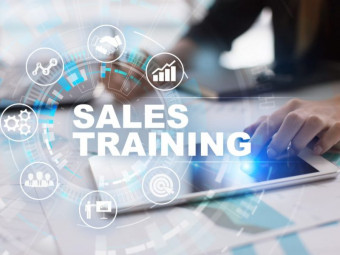Value Innovation Process Success Stories
Tags: Innovation
See how companies drove business growth through innovation. New Products & Services that exceeded their customers' need
Last updated 2022-01-10 | 4.5
- 1. Show that when you follow the Value Innovation Process you will deliver exceptional value to the Most Important Customer in the Value Chain (all six examples)- 2. Demonstrate the importance of following each step of the Value Innovation Process
- 3. Underscore that you must identify the Most Important Customer correctly (The FoldedPak and Nautilus examples)
What you'll learn
* Requirements
* We recommend you take the “Introducing the Value Innovation Process®” course on Udemy before registering for this course* but there are exceptions:
* If you are a Subject Matter Expert in the innovation field you’ll definitely derive value from this course
* If you have attended a Mastering Value Innovation Workshop
* or have read the book Value Innovation Works
* you’ll really enjoy this course
Description
This course shares six Value Innovation Process® success stories to show you how the companies used the process, and the results they achieved.
It builds on your knowledge of the Value Innovation Process® and its enabling tools. You can use the process to develop a new business model, new packaging, new delivery methods, new product and new services and solve problems.
Our goal is to increase your awareness of Value Innovation which is defined as delivering exceptional value to the most important customer in the value chain all the time, every time and show you how it can be used to help you in your business or organization.
The course is delivered in 8 sections .
Each section has a video and pdf file of the ppt deck that was used
Each lecture has “Key Points” at the beginning and “Learnings/Takeaways” at the end
In section 1 we provide a pdf of the Value Innovation Process and a pdf of the enabling tools.
You should be able to complete each section in 30 to 45 minutes. It is up to you how fast you want to learn. We recommend that at a minimum you complete one section a week.
If you want to work on your own project using these tools, you will invest more time
If you have questions,send Dick Lee an email ([email protected]) or call him at +1-720-291-0758 and he will respond in <48h.
Who this course is for:
- Entrepreneurs starting a new business
- Venture Capitalists
- Equity Investors
- "C" Level Executives, VPs, Directors and Managers in Product Management, Product Development, New Business Development, Portfolio Management, Marketing, Strategic Planning, Corporate Growth, R&D and Innovation
- Project Leaders
- Decision makers and influencers in NonProfits
- Six Sigma black belts looking for better tools to manage the Front End of Innovation
- Subject Matter Experts in Open Innovation, Radical Innovation, Disruptive Innovation, Customer Centric Innovation, Classical Innovation, Outcome Driven Innovation, Strategic Innovation, and Management Innovation
- Small Business Owners who want to grow their Business
- Stage 2 and Stage 3 Business Owners who want to grow their Business
Course content
8 sections • 8 lectures
Recapping the Value Innovation Process and enabling tools Preview 07:51
If you are new to this world of Value Innovation, we recommend you take the "Introducing the Value Innovation Process®” course on Udemy before signing up for this one.
This first lecture starts with the definition of Value Innovation: Delivering Exceptional Value to the Most Important Customer (MIC) in the Value Chain, all the time, every time
….and a quick peek at the 10-Step Value Innovation Process. If you haven’t downloaded the Value Innovation Process and Enabling Tools pdf files, we suggest to do so, print them out, and keep them by your computer, tablet, or smartphone.
The Key Points are:
* The 10-Step Value Innovation Process is the Front End of Innovation. It works in small, medium and large sized companies, government agencies and Not-For-Profits
* Even large companies (Chevron and P&G) can use many of these enabling tools
* When you follow the Process in a disciplined way, you will either:
- Deliver exceptional value, or
- Cancel the project
This lecture walks you through each of the ten steps and shares where the success stories will be highlighted.
Aplicare - Transforming a Commodity to a Breakthrough Preview 12:19
The Key Points in this lecture are:
* Aplicare determined the Health Care Professional (ECP) was their Most Important Customer (the User) – Which represented a major change in thinking. Up to this point it was assumed to be the purchasing agent in the hopsital
* In 2004, competitors’ Dressing Change Kits were all the same basic design and price…..commodity?
* Aplicare developed a Value Curve for the HCP:
* Defined “What” value they needed to deliver
* And defined “How” to deliver the “What”
During this lecture you will see a Value Curve with Metrics for the Purchasing Agent where the top 3 Elements Of Performance are Price, Acceptance by the Health Care Professional (HCP) and Availability/Service Level. Overlapping Value Curves for Aplicare and all competitors are a sure sign you are fighting in a commodity market
The project is defined, the Value Chain developed by the Aplicare project team in Step 2 of the Value Innovation Process is shared and the Most Important Customer identified using the 3 Question Template.
Five problems with the standard kit were surfaced as a result of Contextual Interviews with Health Care Professionals and a Value Curve for the “To Be” case (the Advantage System) is shown compared to the standard kits. If Aplicare could deliver this Value Curve in a unique and defensible way, they would be swimming in a Blue Ocean.
We share "How" Aplicare planned to deliver greater value to the HCP on the top six Elements of Performance.
The Advantage Dressing Change System™ was introduced to the market in 2007 at a selling price of $5/unit. HCP’s reaction to the product was WOW!
Patents were published by the USPTO in 2008 and 2010 with the claims covering package design' Aplicare was purchased by Clorox in January, 2012.
Chevron - ITC's Most Important Customers are inside the Company Preview 07:58
The Key Points made are:
* The Most Important Customer was always inside the organization
* Cycle times to complete the 10 Steps of the Value Innovation Process were reduced from 10 to 2 weeks because it was much easier to recruit Most Important Customers inside the organization
* The output from Contextual Interviews with Asset Managers (Have P&L responsibility for oil fields)
- Turned a very complex project into a very manageable project
- Produced a 5y strategic technology roadmap in 2006 that Chevron is still working on today
During the period 2005 to 2009, Chevron’s Information Technology Corporation trained 75 people on the Value Innovation Process and completed approximately 100 projects using it.
During the period 2005 to 2012, Chevron moved from not meeting production forecasts and trailing ExxonMobil on return on upstream capital and net income/barrel of oil equivalent to exceeding production forecasts and leading ExxonMobil on return on upstream capital (25% compared to 20% in 2012) and net income/barrel of oil equivalent ($18 compared to $15 in 2012). Was this solely attributable to use of the Value Innovation Process? No, but it was a contributor!
Compassion International's Water of Life Preview 09:21
The Key Points made are:
* Compassion (a NonProfit) has two Value Chains and two MICs
* There are two Value Curves and they must work in harmony
Compassion is a $0.5B Not-For-Profit, serving 1.3 million children in third world countries. They introduced their first new product, Water of Life, in 2011.
Compassion International trained 10 people on the Value Innovation Process in 3Q, 2009, put Water of Life through the process in March, 2010 and launched it in 2011.
There were two primary drivers for Water of Life:
2.4 billion people in the world lack adequate sanitation; 1.1 billion people are without access to potable water and there are 1.6 million deaths/year due to diarrheal disease attributable to dirty water and poor sanitation.
Sponsors wanted to address this problem with a system solution for a family, not a village or a town (large investment and there maybe mutiple donations required).
The lecture shows Compassion’s Value Chain and the Value Curves they developed for Sponsors and Beneficiaries (a family with a child or children).
Water of Life, for a one time donation of $79, has been a huge success: 100,000 units delivered in the first 6 months, 20,000 new subscribers to the ministry and cholera averted with their 30,000 children in Haiti.
FoldedPak's ExpandOS (a substitute packing material for bubble-wrap and peanuts) Preview 11:51
Key Points are:
1. Even though the product seems like a great idea, you must still:
* Define the Value Chain,
* Identify the Most Important Customer,
* Understand the MIC’s unmet needs.
By not doing this, FoldedPak lost $7MM over 5 years
2. Determine if there are other markets for the product or service. In FoldedPak’s case there was an opportunity to sell retail
3. Amazon.com has instructed TV manufacturers to use the ExpandOS packaging system
FoldedPak Background:
World class product invented in 2003; Company founded 2004; Patented in 20 countries; Product development started in 2004; Over $7M invested capital; By 9/09, Company ready to declare bankruptcy; Brought in a Value Innovation SME; Changed focus to the MIC (mfrs of high margin, fragile products and consumers)
In this lecture you’ll see FoldedPak’s:
Old Value Chain; New Value Chain; How they identified the Most Important Customer (Operations/Logistics at a manufacturer of fragile, high margin products); The B2C Value Chain and the Value Curve with Meytrics for Operations/Logistics
Amazon changed from standard packaging to ExpandOS for TVs
* Facilitated switch from Less Than a Truckload to UPS
* Saved $90/TV on shipping
* Damage, <1%
* Amazon has required all TV mfrs use ExpandOS
* Sales, 6 figures a month
* FolkdedPak 2014 net sales forecasted at $24 million
Nautilus's Schwinn Upright Exercise Bikes - Cardio Control Console Preview 09:46
Nautilus is a manufacturer of exercise equipment used in the home. They are a Stage 2 business with approx. 320 employees.
Key Points:
* Was seeing sales of its Schwinn Exercise Bicycle product line declining
* After they understood the Value Innovation Process, they recognized they were not interfacing with the Most Important Customer (Talking to Buyers, not Users)
* They completed 3 rounds of Contextual Interviews with 14 users in 7 weeks
* Focused on the Cardio Control unit
* Introduced new product lines 13 months later….sales improved immediately
Project Objectives
1. Increase market share of retail Schwinn Cardio Product Line
2. What will it take to win in this highly competitive market?
3. Primary focus on consoles
4. Introduce the Value Innovation Process® to Nautilus
5. Uncover customer insights that can be leveraged for other products
Deliverables
* To Be” value curve from the perspective of the most important customer (MIC)
- Elements ranked & compared to “Best in Class”
- Plan for “HOW” to deliver on “To Be” value curve elements
Step 2: Develop the Value Chain and identify the Most Important Customer.
* Up until March, 2012 Nautilus talked exclusively to Buyers at Sporting Goods Stores
* In June, 2012 Nautilus determined Users/Consumers were the Most Important Customers
Step 3: The “As Is” Value Curve for the Cardio Control Console showed why sales were declining. The value delivered to the User was much lower than the competitive product (“Best in Class”)
Step 4: Outpiut from the 1st Round of Contextual Interviews:
Book rack & second display
* Books, iPads and Kindles fall off the console
* Can’t see the display
No MP3 music input port
Speakers, don't like ear pieces, they get in the way
Console fan
Water bottle holder
Step 5: Generated a “To Be” Value Curve
Steps 6-7 and 10:
Reviewed the “To Be” Value Curve with Users and the options on “How” to deliver the “What”. Users loved the dual display and the rack for a book or an iPad.
What happened?
Introduced the new units in September, 2013
* 3 Upright Bikes
* A recumbent bike
* An elliptical
One month later
* User feedback from Amazon..very positive
* For the 150 Upright Bike, suggested retail price, $499. Offered at $299
* Sales up dramatically
gsk Sensodyne Repair and Protect toothpaste Preview 10:25
Key Points:
Novamin could not compete with the Fast Moving Consumer Packaged Companies (FMCPG) in the toothpaste market
* Their Most Important Customers would change over time, shifting from R&D to brand manager at companies like P&G, Colgate Palmolive, gsk, Unilever, to department merchandiser at retailers like Walmart, Tesco, Sainsbury’s, Safeway, Whole Foods, etc.
gsk recognized they had to win the Zeroth Moment of Truth
* Did it with packaging and advertizing
Background on NovaMin: Spun out from US Biomaterials; Novamin Is a bioglass which reacts with the saliva in the mouth and lays down a dentin like layer on teeth; Oravive toothpaste had a 5% loading of NovaMin (no longer available); Company received 1st Rd funding in April, 2004 ($10M); Oravive toothpaste introduced 2005; Worked with Value Innovations in 2005; 2nd Rd of funding in 2008 ($2.5M)
Gsk Goals:
* Win the Zeroth Moment of Truth (ZMOT) and Second Moment of truth (SMOT) with Ms Consumer:
* ZMOT: New to the world product; Have to convince Ms Consumer she should purchase it
* SMOT: Ms. Consumer uses the product and is very excited by its performance
Winning the Zeroth Moment of Truth: Use an attractive package that incorporates Fresnel lenses; Use the strength of the Sensodyne® brand; Build on gsk’s reputation for reducing tooth sensitivity; Use the name “Repair and Protect”
Winning the Second Moment of Truth: Based solely on Ms Consumer’s reaction to the performance of the toothpaste; The packaging now is no longer important
We show you the ZMOT and SMOT Value Curves for Repair and Protect, P&G’s Crest and Colgate Palmolive’s Total and you’ll see they are different and how gsk is delivering greater value to Ms Consumer on both.
Today Repair and Protect is the fastest selling new toothpaste in years. First toothpaste:
* In the world with NaF and Novamin
* Package to use Fresnel lenses - image is flat but looks 3-D
Wrap Up, Feedback and Next Steps Preview 03:34
Wrap Up:
* Follow the Value Innovation Process – no shortcuts
* The first 5 Steps will get you off to a great start:
- Define the project
- Develop the Value Chain/Web and identify the Most Important Customer
- Develop the “As Is” and “Best in Class” Value Curve with Metrics for the MIC
- Conduct the 1st Round of Contextual Interviews (be prepared to revise the project objectives or cancel the project)
- Define the “To Be” Value Curve with Metrics
Feedback:
* Please go back to the Udemy site and provide your feedback…Thank You
* Your inputs help:
- Others make a decision on whether to sign up
- Us make improvements
Next Steps:
* We expect there to be 6 parts:
- An overview of innovation
- Defining the Project
- Developing Value Chains/Webs and identifying the Most Important Customer (Who are you going to deliver exceptional value to?
- “As Is”, “Best in Class” and “To Be” Value Curves with Metrics (What is the exceptional value you are going to deliver?)
- Contextual Interviewing (Three rounds: Listening, Shaping, Defining)
- “How” to deliver the “What”?








 This course includes:
This course includes:
















